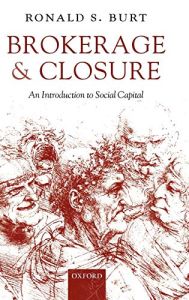Join getAbstract to access the summary!

Join getAbstract to access the summary!
Ronald S. Burt
Brokerage & Closure
An Introduction to Social Capital
Oxford UP, 2005
What's inside?
Brokers are people who build bridges among groups that are normally closed and suspicious of one another.
Recommendation
Professor Ronald S. Burt examines the formal and informal dynamics of organizations’ social structures. He explains how people ("brokers") who belong to more than one group in an organization disseminate new information across group lines. Such brokers perform an invaluable social function by building "social capital" among groups. Burt contrasts this social function with its opposite: "closure," the bonds of internal trust in a contained group. getAbstract warns that this textbook will probably be most useful to readers who are already familiar with theories about social capital and its formation. Its insider language and academic approach may be difficult for uninitiated readers to penetrate. Burt uses sophisticated studies and complex graphs to demonstrate brokerage and closure; nonsociologists will find that his illustrative, but tangential, anecdotes and examples are more accessible than those references. Thus, his explanatory digressions will be the sections of greatest accessibility and interest to most readers.
Summary
About the Author
Ronald S. Burt is the Hobart W. Williams Professor of Sociology and Strategy at the University of Chicago Graduate School of Business.
















Comment on this summary